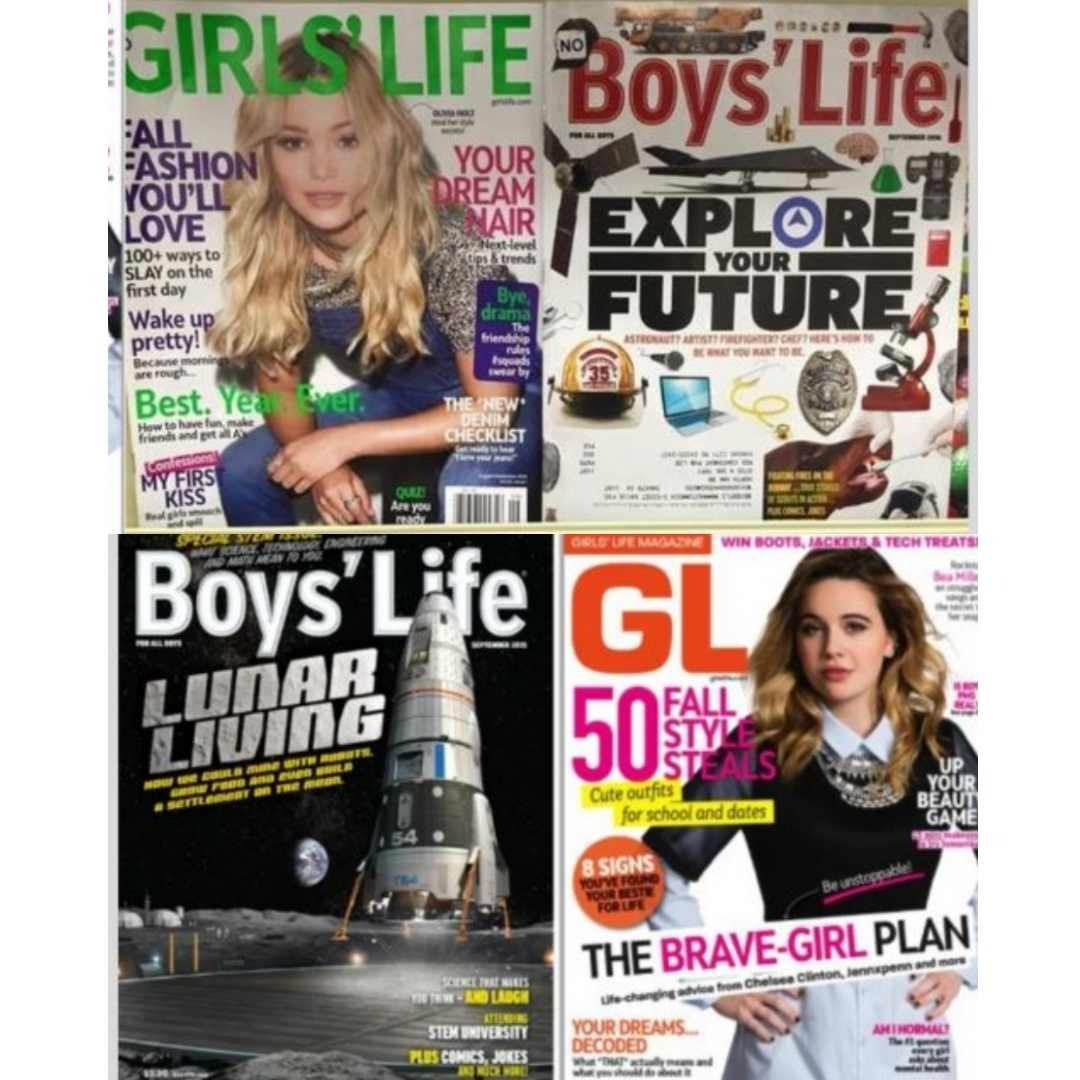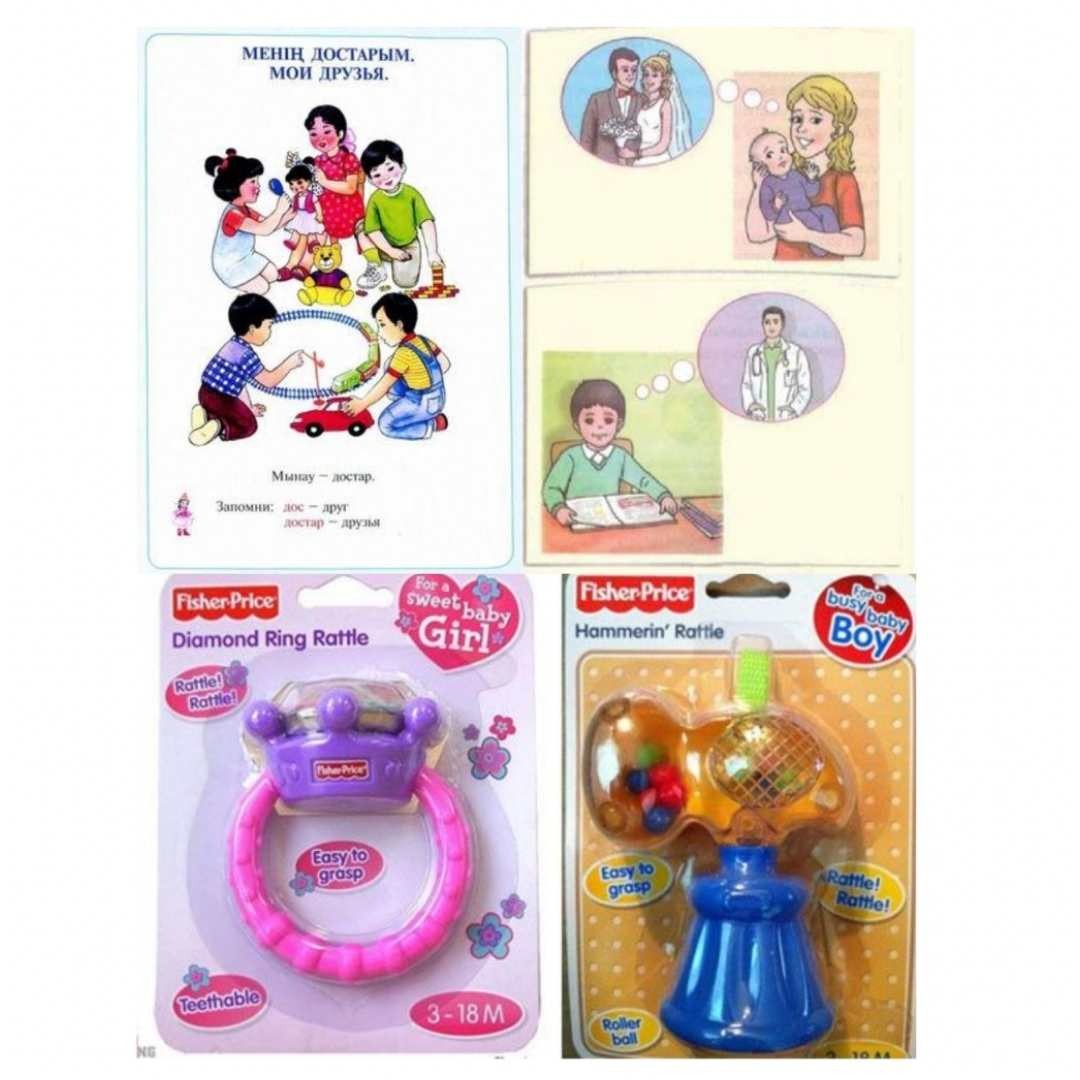The Ways We Push Girls out of STEM
Harmful stereotypes and messaging impact girls' ability to thrive in STEM.
According to Girls Life and Boys Life magazine, Fisher Price, and the creators of children’s toys and apparel, the answer is apparent. Young girls strive to be beautiful, are only concerned with the affairs of vanity, and indulge in gossip and drama. Boys, on the other hand, are focused on their future careers and are encouraged to pursue technology and science.
Girls Life, a popular tween/teen magazine, advertises itself as “the ultimate guide to all things girl.” Yet, the content of the magazine only includes tips on fashion, beauty, and relationships. Is this really what constitutes “all things girls”? Through such magazines, girls are influenced to focus more on appearance rather than be encouraged and inspired to explore their future careers. Girls Life also has an immense social media and online presence. Their company boasts 150,000 Instagram followers, 6.5 million site views a month, and a magazine subscription audience of 1.9 million. Possessing such a large reach, the content of their magazine is directly influencing an entire demographic of impressionable young girls. Girls Life has a male counterpart, Boys Life, which is targeted toward young boys. Boy’s Life is the monthly magazine of Boy Scouts America. An organization focused on leadership training, career-orientated lessons, and hands-on learning. Aimed toward boys aged 9 through 16, Boy’s Life features STEM articles, career blogs, preparation for attending university, and more.

The differences between Girls Life & Boys Life Magazines are stark.
The September 2016 Issues of Girls Life and Boys Life magazines have demonstrated vast gender stereotyping, promoting interest disparities as early as nine years of age. The Boys Life cover headlined “Explore Your Future,” while the Girls Life cover featured “Wake Up Pretty!” This was not the only instance of such blatant stereotyping. In the September/October 2015 issues, Boy’s Life magazine featured a special STEM publication discussing the lunar landing and potential STEM careers, while the Girl’s Life issue featured headlines such as “Up your beauty game” and “50 fall style steals”. Five years later, Girls Life continues to publish magazines promoting appearance and relationships. In the 2019 and 2020 issues of Girls Life, headlines promoted “12 Signs Your Crush Is Into You” and “Beauty Blowout!”. At the same time, Boys Life has continued to promote STEM careers and adventure.
The difference is clear: one issue promotes career and creation while the other promotes vanity and style. When girls are bombarded and exposed to such materialistic content at the tween age, interest disparities inevitably emerge. These influences correlate to high school girls’ deteriorating confidence in mathematics and science. A recent 2017 study published in the Social Psychology of Education to explore gender role bias and confidence in STEM fields revealed that high school girls reported lower self-efficacy in mathematics and science subjects compared to boys.

Gender Stereotypes Start Young.
Interests that are developed in high school are more likely to be explored later on in a college or university. This lack of self-confidence and faith in STEM subjects discourages its pursuance by girls in the future. Even earlier than high school, girls are exposed to stereotypes as babies. Until recently, Fisher Price sold baby rattles in two gendered versions. The rattle targeted toward girls was shaped like a diamond ring and suitable for a “pretty princess.” For boys, the rattle was shaped like a hammer and targeted toward “busy boys.” Although the diamond baby rattle is now sold in a white “gender-neutral” color, such divisions continue to exist in other infant toys. For instance, Fisher Price sells a pink “Laugh and Learn Stroll and Walker Set” with a baby doll for girls while selling a blue “Laugh and Learn Smart Car” for boys. These baby toys are prematurely typecasting young girls.
Young girls deserve a fair shot in STEM.
Even coloring and drawing books are designed differently to target either boys or girls. A UK publication "Let Toys be Toys" that asks the toy and publishing industry to stop needlessly gendering products for children called for the removal of two of Leading Children's Publisher Buster Books' coloring books. The “boy” book is titled “The Brilliant Boys’ Coloring Book” while the “girl” is titled “The Beautiful Girl’s Coloring Book”. Why are girls only considered beautiful, their main trait being their appearance, while boys are brilliant? Every girl should feel as though they are intelligent and capable of pursuing and becoming whatever they want to be.
Around the world, textbooks mainly feature scientists as causian male, while portraying waitresses as women. For example, textbooks shown above from Kazakhstan (right) and Turkey (left) depict a young girl dreaming about marriage and children, while the young boy dreams about pursuing a career and innovation. In Australia, a 2009 study revealed that 57% of the characters in textbooks were men, despite the fact that there are more women than men in the country.
These textbooks have profound implications and perpetuate stereotypes on the younger generation. A study in 2017, asked high school students to associate feminine and masculine traits to either a scientist or humanities professional and ranking the academic performance of girls versus boys in math and science courses. Results revealed that high school students associated masculine traits with scientists and feminine traits with the humanities. Students also attributed better performance in STEM subjects to boys. Textbooks are mainly found in schools and places of education. So why in 2020 do we still condone such stereotypes and subject our girls to this negative exposure?
As a young woman aspiring to pursue a STEM career, I have grown up with stereotypical toys, social media influences, and textbooks that promote women as caregivers and men as the breadwinners. From the bassinet to the workplace, women are faced with barriers and stereotypes that discourage entrance into STEM fields. It is imperative to build young girls' confidence, not hinder them with stereotypes. To do so, companies need to reimagine their gendered branding and labeling of books, toys, and apparel right from their baby and toddler material. Media and publications should portray girls and boys as having equal capabilities and interests in STEM fields. In order to expand the STEM pipeline faced by women, we must first provide our younger generation with the proper role models, media, and influences to inspire. We must encourage creation and innovation from a young age. After all, we young girls are not just pretty princesses. We are builders, pioneers, and pathfinders.
Check out these related articles:
-> Diversity and Inclusion in Technology
-> Women in Technology & Engineering
-> The Future of Technology and Women in STEM
Privacy Policy Terms Of Use




